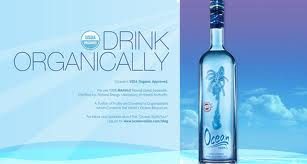By the mid 1800s, the Hawaiian kingdom’s economy was not very bright. Sandalwood, (wesisland.blogspot.com) an important trade item, was almost gone from the forests of Hawaii. And whalers who wintered in Hawaii and restocked their boats were fewer in number; partially because the need for whale oil had diminished as petroleum became a source of fuel for lamps.
The Great Mahele of 1848 allowed for the private ownership of land for Hawaiians and foreigners for the first time. Many American and European businessmen quickly gained control of large tracts of land that led to the development of agriculture and especially the sugar industry in Hawaii.
Sugar was brought to the islands by the early Polynesians who chewed on the plant as a source of energy and food. In 1778, when Captain Cook happened upon the Hawaii islands, the lands were already abundant with sugar cane. The first serious sugar plantation was at Koloa, Kauai in 1835 by Ladd and Co.
In September 1835, Ladd & Co., began the first major Hawaiian sugar plantation. Hooper, Brinsdale, and Ladd managed to do something that no one else had previously done in Hawaii. With the help of missionary settlers, they obtained the first major land lease in Hawaiian history. The lease comprised 980 acres in Koloa, Kauai, which was set aside for sugar cane production. The lease ran 50 years at $300 per year.
The missionaries were bent on making farmers of the Hawaiian natives so Ladd & Co. fell nicely into those plans. By employing Hawaiian natives, they would be teaching them the skills missionaries felt were so necessary. However, perhaps not so surprisingly, native Hawaiians were far from eager to work the fields and the native population had been reduced to 70,000 people by the 1850s, diminished greatly by disease. Ladd history
Sugar meant plantations and mills and the need for workers. Plantation owners turned to workers in devastated areas of the world that were ravaged by wars and famine initially in China, and then Japan, the Philippines and Portugal which explains the rich, varied racial make-up of present-day Hawaii. http://www.hvcb.org/media/bigisland/
The Big Island's lava soil and regular rainfall offer ideal conditions for growing sugar cane. Ah Kina, a Chinese planter, began raising cane at Amauulu above the town of Hilo in 1851.
Among the biggest producers of sugar cane was the Pepeekeo Sugar Company not far from where we now live along the Hamakua Coast. When it was established in 1857, it was named Metcalf Plantation after the owner Theopilus Metcalf. When Metcalf died in 1874, the new owners of the plantation changed its name to the Pepeekeo Sugar Company. http://www.hawaiistateinfo.com/pepeekeo.php
In the early 1960’s Hawaii produced a million tons of sugar cane annually. One of every twelve workers participated in the sugar industry. And these workers were among the highest paid in the world.
Ultimately cheaper sugar from the Caribbean and other locales doomed Hawaii’s sugar cane industry. The last plant closed on the Big Island in 1996. However, the islands still possesses a rich agriculture industry, with large amounts of papaya, vegetables, coffee beans, flowers, and macadamia nuts still being grown and produced. Hawaii Island is also known as the Orchid Isle due to its large production of tropical orchids. http://pinanius.org/tag/island-of-hawaii




Very good and concise history, Wes.
ReplyDeleteI was already here when the sugar plantations closed on the Big Island...It wasn't pretty there for a while.